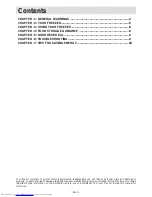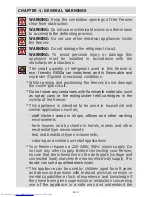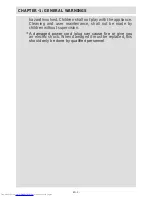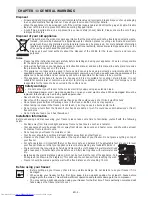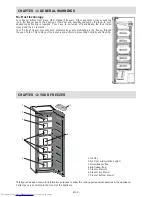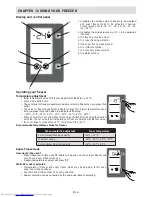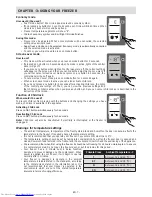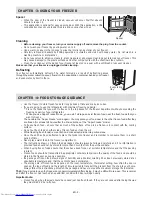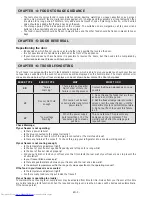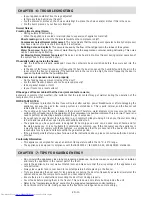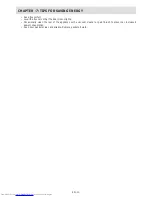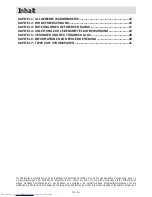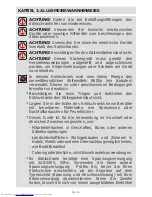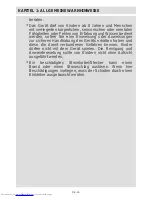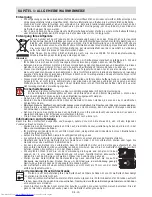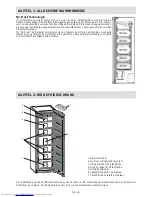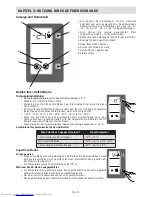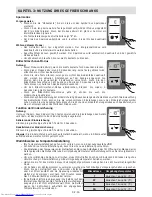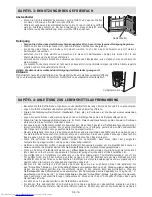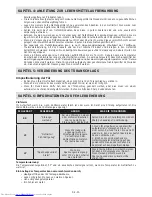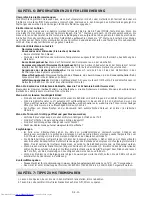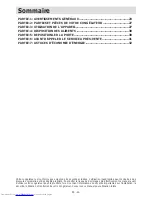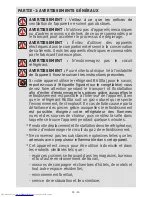
EN -8-
CHAPTER -3: USING YOUR FREEZER
CHAPTER -4: FOOD STORAGE GUIDANCE
•
Use the freezer to store frozen foods for long periods of time and make ice cubes.
•
If you are going to use the refrigerator with maximum freezing capacity:
* Place the foods that you want to freeze to the top basket of the freezer department without exceeding the
freezing capacity of your refrigerator.
*
While you use Super Freeze Mode , you mustn't storage an exist foozen food near the fresh foods that you
want to freeze.
Then enable the “Super Freeze” mode again. You may place your food next to the other frozen food after they
are frozen (for at least 24 hours after the 2nd activation of the “Super Freeze” mode).
•
To freeze fresh food - ensure that as much of the surface of food to be frozen is in contact with the cooling
surface.
•
Do not put fresh food on either side of frozen food as it can thaw it.
• While freezing fresh foods(i.e meat,fish and mincemeat),divide into portion sizes.
•
Once the unit has been defrosted replace the foods into freezer and remember to consume them in a short
period of time.
•
Never place warm food in the freezer compartment.
•
The instructions shown on frozen food packages should always be followed carefully and if no information is
provided food should not be stored for more than 3 months from the purchased date.
•
When buying frozen foods ensure that these have been frozen at suitable temperatures and that the packing
is intact.
•
Frozen foods should be transported in appropriate containers to maintain the quality of the food and should be
stored in the freezer as soon as possible.
•
If a package of frozen food shows signs of humidity and abnormal swelling it has been previously stored at an
unsuitable temperature and that the contents have deteriorated.
•
The storage life of frozen foods depends on the room temperature, thermostat setting, how often the door is
opened, the type of food and the length of time required to transport the product from the shop to your home.
Always follow the instructions printed on the package and never exceed the maximum storage life indicated.
That;
If you decide to open the freezer door again immediately after closing, it may be difficult to re-open. This is normal
and after the freezer has reached an equilibrium condition the door will open easily.
Important note:
•
Frozen foods, when thawed, should be cooked just like fresh foods. If they are not cooked after being thawed
they must NEVER be re-frozen.
Spacer
•
When the door of the freezer is closed, vacuum will occur. Wait for about 1
minute to reopen it.
•
This application is optional for easy opening door. With this application, a little
condensation may occur around this area and you may take it out.
Spacer
Cleaning
• Before cleaning your freezer, turn your mains supply off and remove the plug from the socket.
•
Do not wash your freezer by pouring water on to it.
•
Use a warm, soapy cloth or sponge to wipe the interior and exterior of your freezer.
•
Carefully remove all baskets by sliding upwards or outwards and clean with soapy water. Do not wash in a
washing machine or dishwasher.
•
Do not use solvents, abrasive cleaners, glass cleaners or all purpose cleaning agents to clean your freezer. This
may cause damage to the plastic surfaces and other components with the chemicals they contain.
•
Clean the condenser at the back of your freezer at least once a year with a soft brush or vacuum cleaner.
Make sure that your freezer is unplugged while cleaning.
Defrosting
Your freezer automatically defrosts. The water formed as a result of defrosting passes
through the water collection spout, flows into the vaporization container behind your freezer
and evaporates by itself in there.
Evaporating
tray


